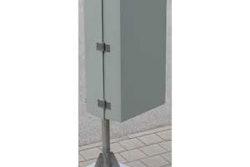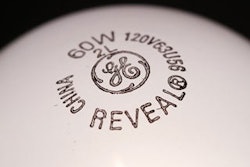Consumers want to be assured that the medicines they purchase will be both effective and safe. Customers care about more than safe manufacturing processes — they need to know that their safety was protected by proper packaging and transport as well.
The FDA requires that pharmaceutical manufacturing companies use tamper-evident packaging on over-the-counter (OTC) products for retail sale to ensure customer safety. With tamper evidence employed on bottles, blister packs and more, customers have a better chance of being able to tell if their medicine was adulterated. Yet, although tamper evidence provides some level of security, extra steps must be taken to ensure that the packaging reaches its full potential.
Proper inspection can help ensure that the package is working properly, but can a product ever be completely tamper proof? Are companies finding new ways to ensure safety? To find out,Pharmaceutical Processing spoke with providers of tamper-evident packaging.
Doubling Up
Tamper-evident packaging varies depending on if the product will be handled by pharmacists, customers or both parties. The FDA calls for one layer of tamper evidence for products that are solely behind the counter with pharmacists, while two layers must be used for OTC products.
If the product is “behind the counter with the pharmacists, [the FDA] is going to recommend one level of tamper evidence … some type of seal that’s on the top of the bottle,” says Eric Allen, director of sales and marketing for Aphena Pharma Solutions, a contract packaging and manufacturing organization. If people that “are not pharmacists or pharm techs or employees of the retail company are picking up and looking at components, the FDA requires that there has to be a second tamper-evident system.” This secondary barrier could be “the carton or a neckband, or some type of sleeve that protects the cap from being opened.”
“Liquids and solids are commonly put into bottles with tamper-evident seals — that’s very straightforward,” Allen says. But many OTC “liquids, gels and powders are put into sachets, pouches” and other such systems that could not be considered tamper-evident methods by themselves, “however, they are sealed, tamper-evident systems because they are closed and the product is under stability — if it’s exposed, it’s obvious the package has been opened.” These alternative solutions would “normally still go into some type of secondary tamper-evident system, whether that’s a carton or a clamshell clear system that’s hanging on the end cap.”
Going Green
Tamper-evident packaging is not a new invention — the FDA has been promoting and enforcing tamper evidence for years. “Today, consumers expect a safety seal when they open a container filled with pills, tablets or liquid OTC products,” says Mark Plantier, vice president of marketing for Enercon Industries, a company that offers induction sealers for caps as well as cap-inspection systems.
Although the FDA occasionally develops new advisories and regulations regarding tamper evidence, the technologies used in the tamper-evident packaging industry remain, for the most part, unchanged. Yet, in today’s environmentally aware era, tamper-evident packaging is becoming greener.
Allen says that he has noticed a number of green initiatives. He explains that “people are trying to get rid of cartons or corrugated boxes,” and other less environmentally friendly packaging components. For that reason, he notes that the industry seems to be trending toward “a full-printed educational shrink-sleeve … which still acts as a tamper-evident barrier.”
Putting Quality under the Microscope
Tamper evidence is useless if it is faulty from inception. Therefore, proper inspection is crucial: By following FDA guidelines, properly validating machinery and inspecting packaging, companies are able to guarantee quality.
Allen offers an example: “In a bottle and a cap … for the machine that seals those systems down to the bottles, there are setup procedures and guidelines that we have to follow through validation work. We challenge those machines in the front and the back side, as well as during all production batches, to verify that the package is staying, and the seals are going on properly.”
Inspection can often be integrated with a tamper-evident packaging system. “Most packagers will integrate a cap-inspection system with their induction-sealing operation,” says Plantier. “This ensures that all containers passing through their induction sealer have a foil seal.” For example, one of Enercon’s newer induction sealers offers mechanically and electrically integrated inspection, detecting high caps and missing foils, as well as stalled and backed-up bottles. It also automatically ejects containers that are missing foils.
The Enigma of Tamper-Proof Packaging
The industry often uses the terms “tamper proof” and “tamper evident” interchangeably, but Allen explains that the two terms are actually very different. “Tamper evident means that it is evident: Our consumer can look at something to see if it has been messed with, or if it gives the appearance that it has been messed with,” whereas “tamper proof is no different than saying that ‘there’s no way that you can get into this product — 100 percent no way you can get into it without a special device or a key or scissors or something,’” which would make it very obvious that it had been adulterated.
“If you made a pack of cookies tamper proof, you’d never eat them,” Allen jokes. “That’s kind of silly, but it’s true.” Whereas, if your cookies’ package is tamper evident, “you know that you have to cut the package open to get to your cookies,” but you can eventually get into the package.
It is “really tough to say in the packaging world that something is tamper proof, because that means that the customer could never get to it, unless you open it for them with a special device or something.” Allen explains that “if someone is really creative, and they want to get to a product to cause harm, it’s possible that they could do it and you would never know. Not to scare consumers, but that is true — it just depends on what level of deception a person wants to go to get to [the product]. This is why it is so important for packaging companies and retail companies to put preventive measures in place to protect the end customer; for example, double tamper-evident guidelines and retails not accepting returned items back into the supply chain.”
Because tamper-proof packaging is virtually impossible for the pharmaceutical industry, the two stages of tamper evidence that the FDA requires really becomes that much more important. “As a packaging company, that’s pretty much the best you can do,” Allen says.
Always Evolving
Trends in packaging tend to change based on FDA requirements and regulations. “From a standpoint of existing OTCs and drug products and other controls, I think the FDA and other governing companies are always open to new ideas and concepts,” Allen says. “The focus by everyone, or should be, is the end customers’ safety.”
By choosing high-quality packaging, following FDA guidelines and making sure that inspection is taking place, pharmaceutical companies can not only protect their customers’ safety, but also their brand’s reputation.
Photos courtesy of Enercon Industries























